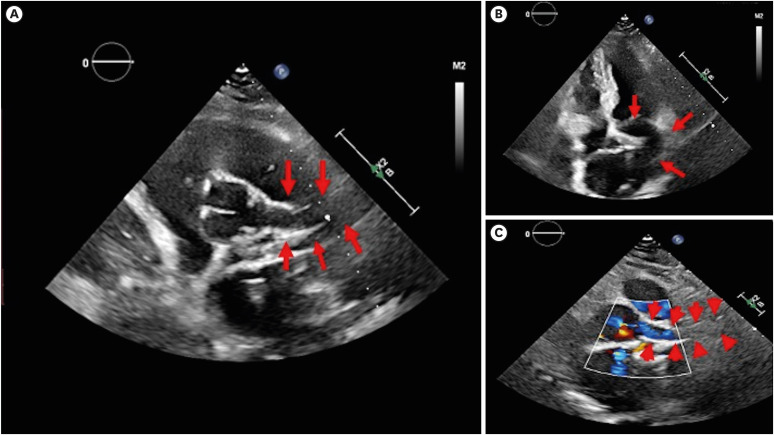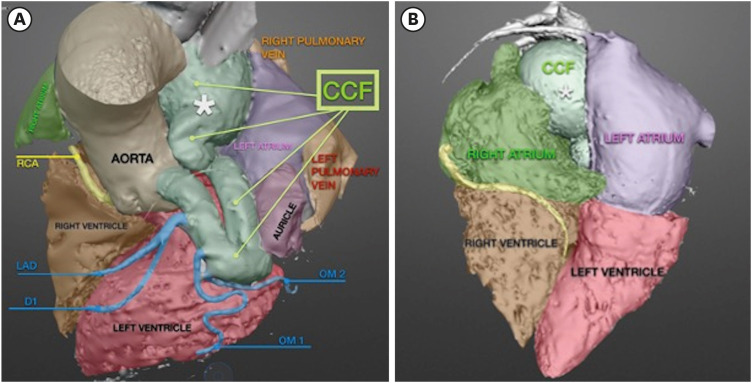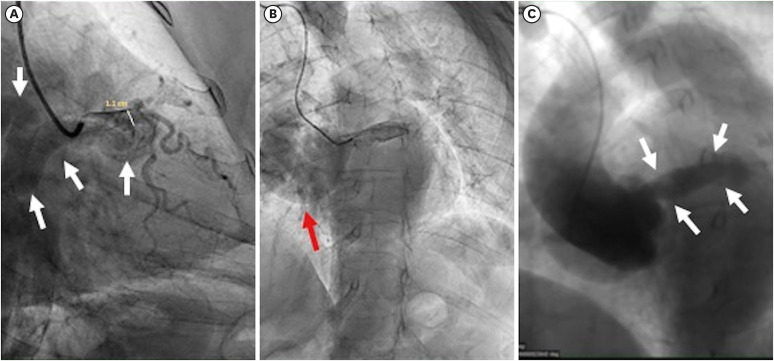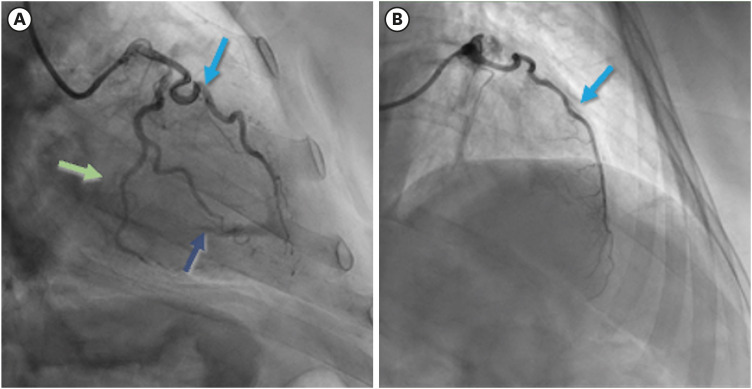Korean Circ J.
2024 Mar;54(3):160-163. 10.4070/kcj.2023.0245.
Coronary Cameral Fistula With Giant Aneurysm
- Affiliations
-
- 1Division of Cardiology, Sant’Andrea Hospital, Rome, Italy
- 2Department of Clinical and Molecular Medicine, Sapienza University of Rome, Italy
- KMID: 2554146
- DOI: http://doi.org/10.4070/kcj.2023.0245
Figure
Reference
-
1. Said SA, Schiphorst RH, Derksen R, Wagenaar LJ. Coronary-cameral fistulas in adults: acquired types (second of two parts). World J Cardiol. 2013; 5:484–494. PMID: 24432186.2. Mangukia CV. Coronary artery fistula. Ann Thorac Surg. 2012; 93:2084–2092. PMID: 22560322.3. Ata Y, Turk T, Bicer M, Yalcin M, Ata F, Yavuz S. Coronary arteriovenous fistulas in the adults: natural history and management strategies. J Cardiothorac Surg. 2009; 4:62. PMID: 19891792.
- Full Text Links
- Actions
-
Cited
- CITED
-
- Close
- Share
- Similar articles
-
- Right Coronary Artery to Left Ventricular Fistula with a Giant Right Coronary Artery Aneurysm: A case report
- A Case of Giant Aneurysm of Coronary Arteriovenous Fistula Treated by Percutaneous Deployment of Embolization Coil
- Coronary Artery Fistula with Giant Aneurysm and Coronary Stenosis Treated by Transcatheter Embolization and Stent
- Right Coronary Artery to Left Ventricular Fistula with Giant Right Coronary Artery Aneurysm
- Multiple Giant Coronary Aneurysms Arising from Coronary Fistula to the Pulmonary Artery Revealed in Aorta CT Angiography






